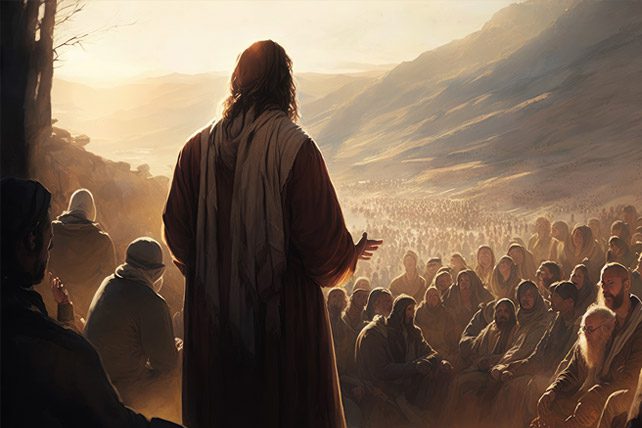It’s very common to hear people critique various strategies, and simultaneously advance others, based on their observations of the ministry stylings of Jesus.
For example, some will point to Jesus’ selecting 12 disciples (and among those, seemingly, focusing on three), doing life with them as a group for three years, and from that, draw conclusions about how best to not only disciple but to “do” church. The usual translation is to eschew anything related to larger groups, carefully curated events or services, and to instead roll up your sleeves to plunge into little more than a small group-based ministry.
After all, that’s what Jesus did.
Except He didn’t. At least that wasn’t all that He did. Yes, in terms of preparing the initial, future leadership of the church, there were the 12, then the 70, then the 120, and on from there. But was that intended to serve as a timeless model for discipleship, much less church growth?
Apparently not.
First, because Jesus also incorporated very large gatherings. His three-fold ministry was essentially preaching, teaching and healing (cf. Mt. 4:23-24). All three of these were done, almost always, in large group settings.
Another reason we can question a small group-based ministry approach as the “Jesus” approach comes from continuing to read the biblical narrative beyond the biographical accounts of His life into the Acts. As in what the Holy Spirit did at Pentecost, which included dropping thousands of new believers onto the laps of those initial 12.
This simple observation is why I have long resisted those who place large, carefully curated large-group services up against individual discipleship, as if this is an “either-or” dynamic. Biblically, it isn’t. It is a “both-and.” Jesus did a lot of individual discipleship, but He also did a lot of large-group gatherings.
Further, the early church was birthed through a large-scale evangelistic gathering that, again, dumped thousands of converts on a handful of “discipled.” If the 12 strapped on the 3,000 men (that’s not even counting women and children) baptized on Pentecost in groups of 12, they would only have been able to start discipling 144 of them. That is only 4.8%.
According to Acts, they didn’t do that. Instead, they brought in deacons to share the leadership load, and they devoted themselves to teaching. Large group discipleship teaching (cf. Acts 2:42). The Holy Spirit, through Pentecost, seemed to force them away from the so-called “Jesus model” of discipleship (three, then 12, then 70, then 120) into a larger-scale model.
Was there individual discipleship? Of course. That’s not the point. The point is that individual discipleship alone, along the lines of what Jesus did with the 12, was not considered the only model to follow. Or even the primary model to follow.
One of the most important lessons of biblical interpretation is not to confuse narrative material with didactic material. Narrative material is simply describing something that happened or a series of events. It’s informative but not normative. Didactic material is intended teaching.

